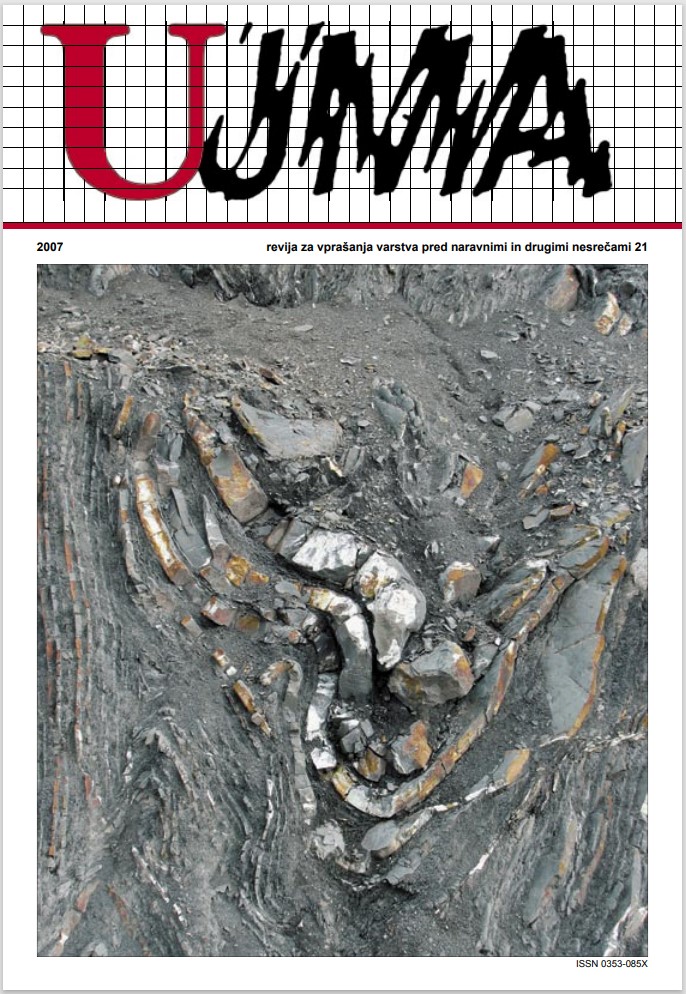INFORMATION DIMENSIONS OF CONTEMPORARY TERRORISM-THEORETICAL DILEMMAS AND PRACTICAL ASPECTS
Abstract
Although there are also analytical and theoretical disagreements regarding the definition of terrorism as well the concept of information terrorism, terrorism and its information aspects have undoubtedly become increasingly important to the western security threat assessment. Western society’s dependence on information technology and infrastructure is supposed to be exploited by contemporary terrorists to sow terror, fear and a feeling of threat. In a fundamental sense, (information) terrorists could even have so physical effects as well collateral damage should be caused. Is in consequence information terrorism hype or reality? In terms of physical violence, one would have to agree with the sceptics who say that we cannot talk of information terrorism until life or property, or the normal functioning of basic social processes, are actually threatened by a terrorist attack on critical information infrastructure. In terms of fear and the psychological aspects of the terrorist threat, it is clear that terrorism could not exist without (interactive digital) media coverage. Last but not least, we should also be aware that the internet is becoming an ever more important tool in the hands of terrorists for gathering information, spreading propaganda, fundraising and operation and coordination management. The cheapness and diffusion of information technology means that it has become simultaneously the tool and target of terrorist activities.
References
Belič, I., 2001. Informacijski terorizem. V: Varstvoslovje let. 3/št. 4. Ministrstvo za notranje zadeve RS, Visoka policijsko-varnostna šola, 262–268.
Denning, D. E., 1999. Information warfare and security. Berkeley, Sidney, Bonn: addison-wesley.
Denning, D. E., 2000a. Cyberterrorism. V: Global Dialogue, dostopno tudi: http://www.cs.georgetown.edu/~denning/infosec/cyberterror-GD.doc (9. 11. 2004).
Denning, D. E., 2000b. Testimony before the Special Oversight Panel on Terrorism. U.S. House of Representatives, Committee on Armed Services (23 May), dostopno: http://www.cs.georgetown.edu/~denning/infosec/cyberterror.html (09. 11. 2004).
Denning, D. E., 2001. Is Cyber Terror Next? New York: U.S. Social Science Research Council, (1. novemeber 2001) dostopno: http://www.ssrc.org/sept11/essays/ denning.htm (9.11.2004).
Devost, M. G., 1995. National Security in the Information Age, dostopno: http://www.devost.net/ papers/national_security_in_the_information_age. html (09. 10. 2006).
Devost, M., Houghton, B. in Pollard, N., 1997–1998. Information Terrorism: Can You Trust Your Toaster? V: Sun Tzu Art of War in Information Warfare.
Golpira, H., 2006. Info jihad. Tehran Times.com, 08. 04. 2006. http://www.tehrantimes.com/Description.asp?Da=4/8/2006&Cat=14&Num=001 (15. 4. 2006).
Golubev, V., 2003. Cyberterrorism - the new side of terrorism. Computer Crime Research Center, 21. jul., dostopno: http://www.crime-research.org/news/2003/07/Mess2102.html, (25. 09. 2006).
Hutter, R., 2002. Cyber Terror- eine realistische Gefahr? Dostopno: http://www.aksis.de/CyberTerror.pdf (19. 08. 2006). 11. Krunić, Z., 1997. Strategija posrednega nastopanja. Ljubljana: Unigraf.
Politt, Mark M., 1997. Cyberterrorism – Fact or Fancy? FBI Laboratory, Washington D. C., dostopno: http://www.cs.georgetown.edu/~denning/infosec/pollitt.html (09. 10. 2006).
Savino, A., 2002. Cyber-Terrorism, Introduction, dostopno: http://cybercrimes.net/Terrorism/ct.html (25. 09. 2006).
Shahar, Y., 1997. Information warfare. International Policy Institute for Counter-Terrorism, dostopno tudi na: http://www.iwar.org.uk/cyberterror/resources/CIT.htm (04. 06. 2006).
Svete, U., 2005. Varnost v informacijski družbi. Ljubljana, Fakulteta za družbene vede.
Terrorists Use of Information Technology. Terrorism files org, http://www.terrorismfiles.org/weapons/information_technology.html (02. 10. 2006).
Thomas, T., 2003. Al Qaeda and the Internet: The Danger of »Cyberplanning. V: Parameters, Spring 2003, 112–123, dostopno tudi: http://carliste-ww.army.mil/usawc/Parameters/03spring/thomas.pdf (01. 12. 2004).
Thomas, T., 2002. 30 Informationa-Age »De-Terror-Ance«, dostopno: http://www.leavenworth.army.mil/milrev/English/JanFeb02/thomas.htm (01. 12. 2004).
Weimann, G., 2005. Cyberterrorismus ist eine große, schwarze Wolke am Horizont. Dostopno http://www.sicherheit-heute.de/index.php?cccpage=readtechnik&set_z_artikel=200 (26. 11. 2005).
Weimann, G., 2006. Terror on the Internet: The New Arena, The New Challenges. Washington D.C.: United States Institute of Peace Press.
Whine, M., 1999. Cyberspace, A New Medium for Communication, Command and Control by Extremists. V: Studies in Conflict and Terrorism, 5. maj 1999, RAND, dostopno tudi: http://www.ict.org.il/articles/articledet.cfm?articleid=76 (18. 04. 2005).
Zanini, M. in Edwards, S., 2001. The Networking of Terror in the Information Age. V: Arquilla, J. in Ronfeldt, D. (ed.), 2001. Networks and Netwars: The Future of Terror, Crime and Militancy. RAND, dostopno tudi: http://www.rand.org/publications/MR/MR1382/MR1392.ch2.pdf (15. 06. 2004).
Downloads
Published
Issue
Section
License

This work is licensed under a Creative Commons Attribution-NonCommercial-NoDerivatives 4.0 International License.
The articles are made available to the public under Creative Commons Attribution-NonCommercial-NoDerivatives 4.0 International (CC BY-NC-ND 4.0).


